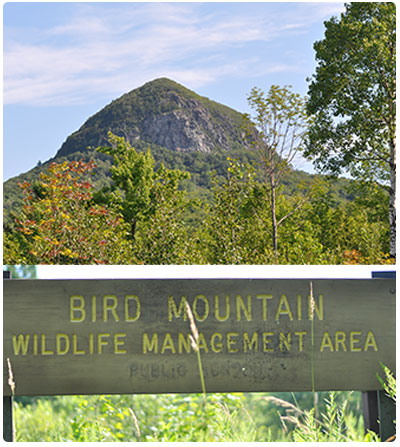 The Vermont Agency of Natural Resources (ANR), through the Departments of Fish and Wildlife and Forests, Parks and Recreation, is developing a new long-range management plan for the Castleton Management Unit, which includes Birdseye and Blueberry Hill Wildlife Management Areas (WMAs).
The Vermont Agency of Natural Resources (ANR), through the Departments of Fish and Wildlife and Forests, Parks and Recreation, is developing a new long-range management plan for the Castleton Management Unit, which includes Birdseye and Blueberry Hill Wildlife Management Areas (WMAs).
Public Scoping
The long-range management plan serves as a guide for land management on ANR land, and typically lasts for 20 years. ANR is conducting public scoping early in the planning process to better understand how Vermonters use and value these lands. This input influences a first draft of the plan, which will be later shared with the public for comment before moving on to a final draft.
The public is asked to learn more about the 4,285-acre Castleton Management Unit and share their input through an online survey.*
The survey will be open until December 3, 2021.
Comments can also be emailed to ANR.CMUPublicComment@vermont.gov
*As part of the Fish & Wildlife Department’s WMA program there are rules that outline authorized and prohibited activities allowed on Fish & Wildlife lands. Thiese rules formalizes existing and ongoing management to improve enforcement, clarify priority uses, set clear expectations for the use of these lands, and protect public safety.
Background
Birdseye and Blueberry Hill WMAs are situated within the Taconic Mountain range and provide important unfragmented habitat for a wide range of wildlife. The WMAs are also part of a larger wildlife corridor across Route 4 and north along the Taconic Mountains and ultimately connecting with the central Green Mountains. These WMAs are critical parts of a larger ecological connection that enables wildlife to move throughout this region of Vermont.
They also support a wide range of important habitat including headwater streams and wetlands, red oak, American beech, and other food producing trees, young forest that benefits chestnut-sided warblers, ruffed grouse, and many other species of wildlife, deer winter habitat, and more.
Birdseye and Blueberry Hill WMAs form a uniquely rugged set of mountains and valleys in a part of Vermont popular with outdoor enthusiasts. These WMAs are popular destinations for deer, bear and upland bird hunters during the fall hunting seasons and turkey hunters in the spring. Given the large size of these WMAs, people can also enjoy backcountry experiences with wildlife.
